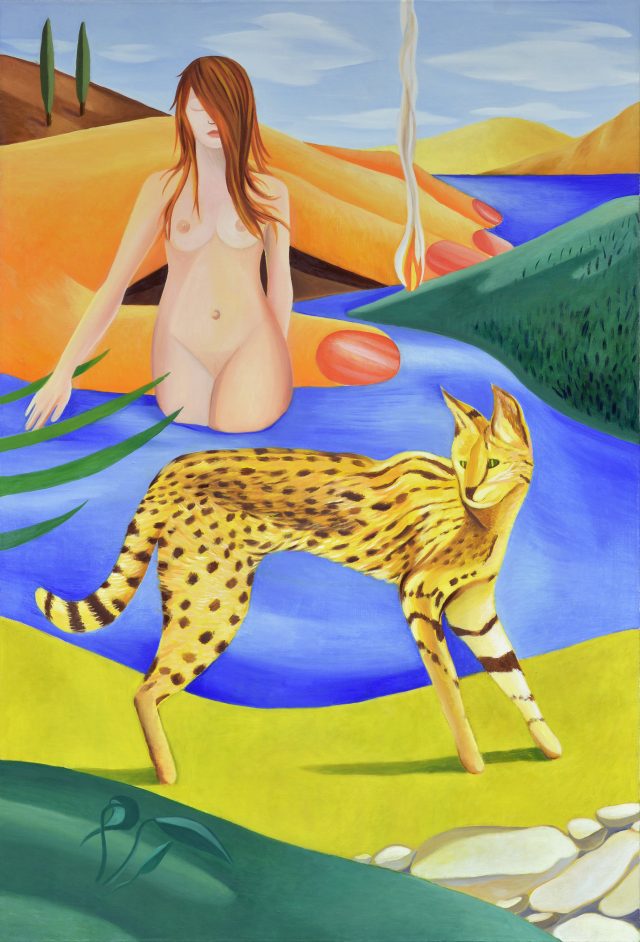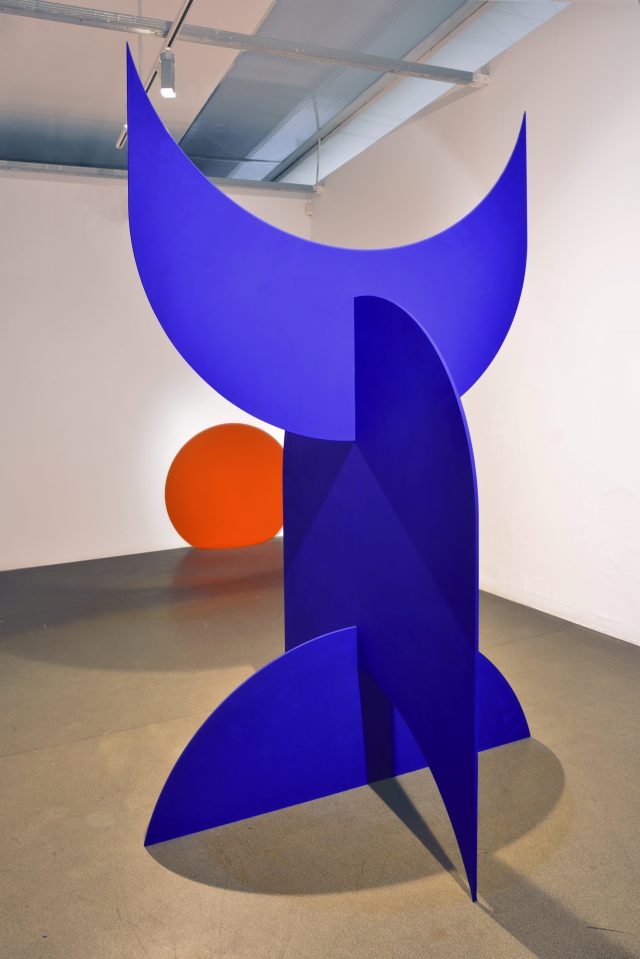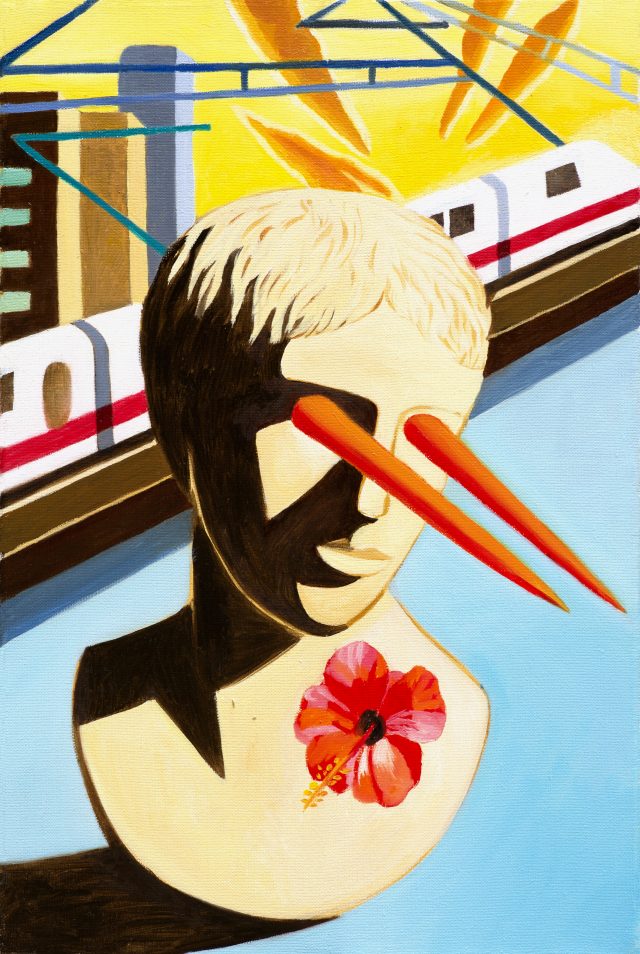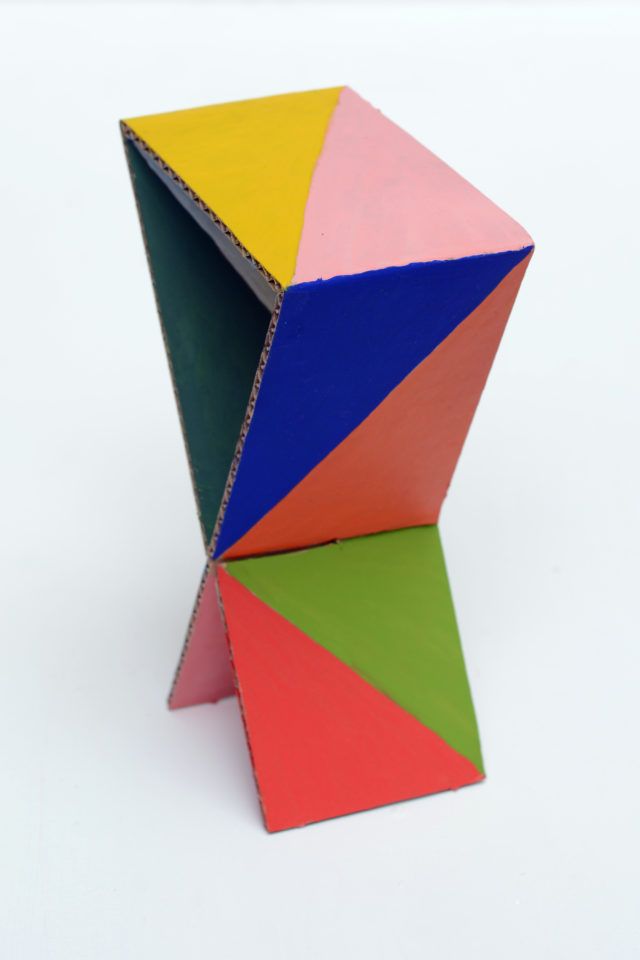Although Kinga Nowak’s creative output may be divided into two separate stages – figurative and planar on the one hand, and abstract and spatial on the other – they are both saturated with the same spirit of surrealness.
Nowak’s early pieces recall Maya Deren’s films. As soon as we believe we have captured a structure that is concrete, it suddenly slips through the fingers, and the sequences disunite. The sense of linear time vanishes, prehistory merges with future on a single plane like in Planet of the Apes. Everyday scenes turn into mysterious rites, animals into totems, while faces become tribal masks.
A journey across overlapping dimensions represented in vivid colours is beginning to look like a trip where random bric-a-brac or roadside stones come to life in a most extraordinary fashion, and the universe appears to be a harmonious unity. However, the world in Kinga Nowak’s pictures is not a hippy paradise. Wholesome objects grow menacing, domestic pets acquire the form of fearsome and finicky ancient divinities, and picturesque landscapes look back at us with their empty and deathly eye sockets.
Surreal in spirit, Nowak’s figurative painting belongs to another chapter of Polish art history than the work of the “weary of reality” a few years previously. It seems pointless to look for echoes of the Central European, Polish or Czech Surrealism here, with its stuffy and stale climate, especially in the post-war trauma-stricken period. Rather, Nowak’s pieces remain close to the French roots of the Surrealist movement, André Breton’s tastes and obsessions, and in terms of form they also reveal traces of pittura metafisica and American Precisionism.
When Nowak’s painting made a turn towards abstraction, it stayed faithful to oneiric logic and diversified narrative. The transition between two orders is smooth and just like the stories related by the artist’s paintings it refuses to be deposited in neat compartments on the axis of time. While in keeping with avant-garde rules artists such as Malevich split Russian peasants into cylinders and cones, eventually reducing the real world to flat geometric elementary particles, Nowak allows anecdotes to unexpectedly unfold from beneath the undisturbed geometric plane. Some objects bring useable items to mind, as though they were lost furniture models by one of the members of the Memphis Group. Yet it would be wrong to talk about a productivist flair here – it is not art that sets direction for design, but forms from the world of design that infiltrate afunctional gallery art.
The association game occurs as well at the level of titles which can be both technical and mathematically aloof, and pictorial, almost lyrical and metaphorical, provoking entirely different interpretations of formally similar compositions.
Although comprised of few constituents, Kinga Nowak’s painterly objects cause surprise and cannot be captured at a glance. Rims and rectangles bend and break as though some invisible forces were working on them, merging into the floor or squeezing into the corners of undetectable walls. Variegated perspectives unfold before our very eyes as we come closer to these works or go around them. Unexpected foreshortenings and colour changes add a surprising sense of drama to simple forms. Even the flat surface of colourful planes is not as one-dimensional as it appears from a distance. As we come closer we find out that the materials – plywood and cardboard – as well as a free gesture with the brush give them a greater painterly depth. Drawing from the experience of Minimalists, Nowak turns space into an element of her objects, bending it like she did in the scenes of her early canvases. The white cube housing Nowak’s objects becomes a warped stage design reminiscent of The Cabinet of Dr. Caligari.



